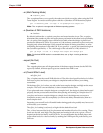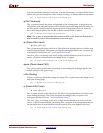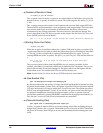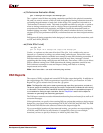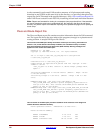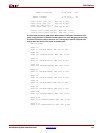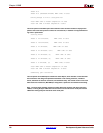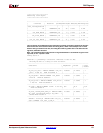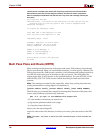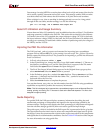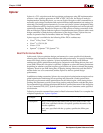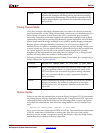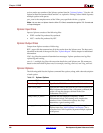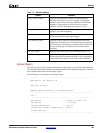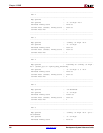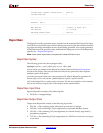
178 www.xilinx.com Development System Reference Guide
Chapter 9: PAR
R
The last portion of the PAR report shows how many timing constraints were met and whether
PAR was able to place and route the design successfully. The total time used to complete the
PAR run is displayed in both REAL time and CPU time. Any errors and a message summary are
also shown.
All constraints were met.
INFO:Timing:2761 - N/A entries in the Constraints list may indicate that the
constraint does not cover any paths or that it has no requested value.
Generating Pad Report.
All signals are completely routed.
Total REAL time to PAR completion: 53 secs
Total CPU time to PAR completion: 11 secs
Peak Memory Usage: 99 MB
Placement: Completed - No errors found.
Routing: Completed - No errors found.
Timing: Completed - No errors found.
Number of error messages: 0
Number of warning messages: 2
Number of info messages: 0
Writing design to file c:\test\par0.ncd
par done!
Multi Pass Place and Route (MPPR)
When running multiple iterations of the placer and router, PAR produces output design
files for each iteration. When you run multiple iterations, you must specify a directory for
PAR to place these files. PAR records a summary of all placement and routing iterations in
one PAR file at the same level as the directory that you specify. Then PAR places the
output design files, in NCD format, in the specified directory. For each NCD file, a PAR
and PAD files (CSV, TXT, PAD) are also created, describing in detail each individual
iteration.
Note: The naming convention for the output files, which may contain placement and
routing information in varying degrees of completion, is:
[placer effort level]_[router effort level]_[cost table number]
The following is a command line example for running three iterations of the placer and
router, using a different cost table entry each time.
par –n 3
-pl high -rl std address.ncd output.dir
–n 3 is the number of iterations you want to run,
–pl high sets the placement effort level to high
–rl std sets the router effort level
address.ncd is the input design file
output.dir is the name of the directory in which you want to place the results of the PAR
run.
Note:
Cost table 1, the default, is used for the initial cost table because no initial cost table was
specified.



